

We were asked by a client if we could map a series of coastal sites to assess their potential as a landfall sites for offshore cables. Trying to get accurate data on such sites using traditional methods was both costly and time consuming so drone based surveying was the clear solution. Our experience coupled with our state of the art drone technology allowed us to efficiently map 17 different coastal sites around the country. Lets take a look at how we did this...
The client for this job is a major firm in the offshore development sector. They needed high quality data on which they could make decisions that had millions of euros at stake. For this reason a full quality management plan was implemented to ensure data integrity from start to finish. After that we moved onto getting a precise deliverables specification from the client.
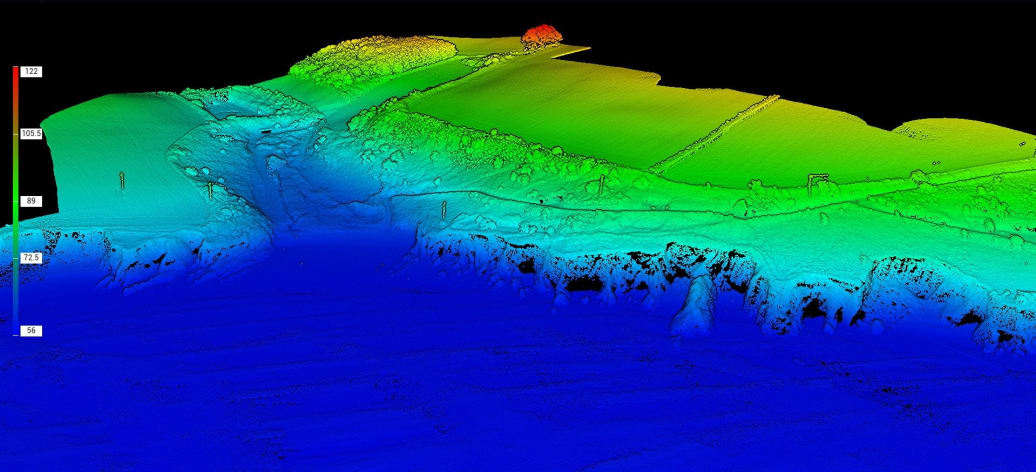
Once the final deliverables specification was established we then moved on to ensure an efficient field work program. A key factor in this job was stakeholder engagement. Since we would be mapping many sites around the country there would be a lot of landowners to be liaised with. It is our policy to always have direct contact with an agent on the ground where possible as this avoids confusion on site as to why we are there. With this job there was a number of sites that had to be accessed so landowner engagement started early in the process.
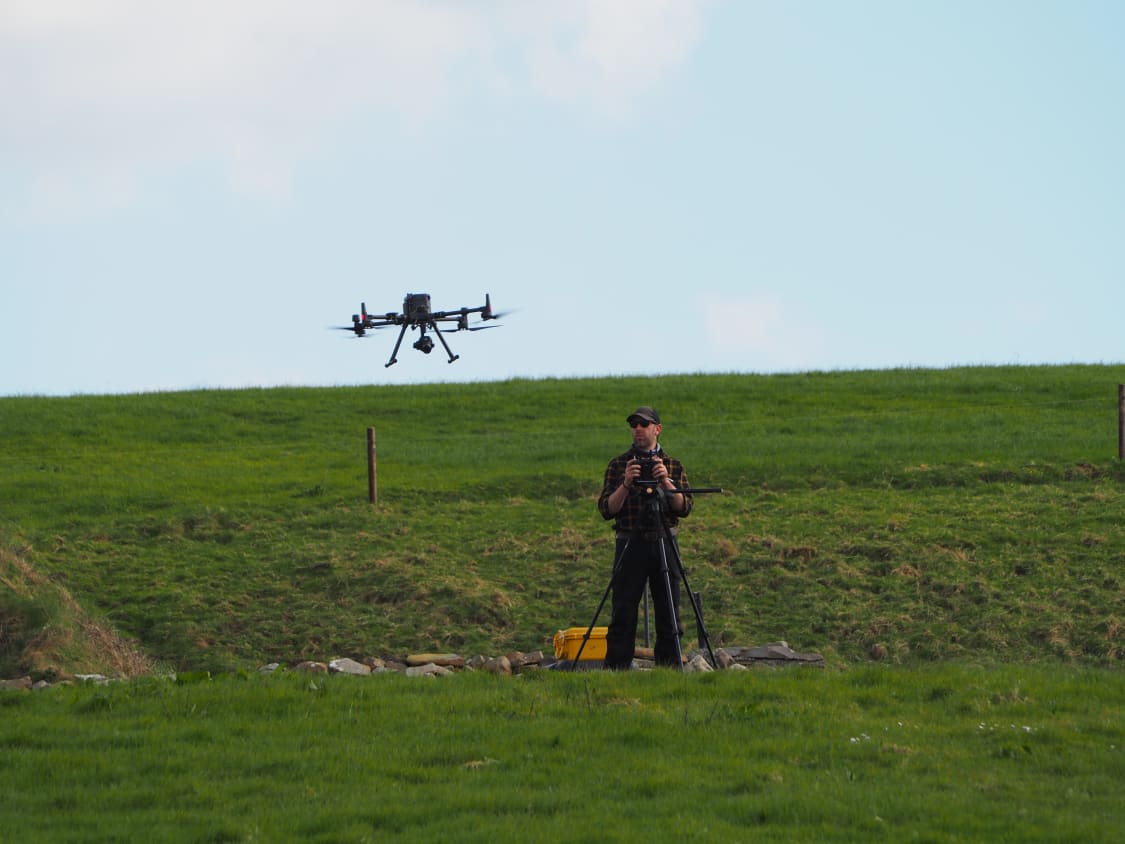
Once we were happy with the field logistics we then turned our attention to at drone selection. Since most of the sites were in remote locations away from built-up areas we could deploy larger drones like the DJI M300. This gave us the option to use different sensor types depending on the terrain we encountered. This was important because we had to map 350 hectares on this project which is a small number relatively speaking (we can fly that on a single block site in a day if required) when spread across 17 sites around the country the logistics start to really matter. For most of the site we chose to use photogrammetry using the Zenmuse P1 Photogrammetry payload. For some site where there was significant vegetation we also employed the Zenmuse L1 LIDAR payload to penetrate under the vegetation to gte a true bare earth model of the land.
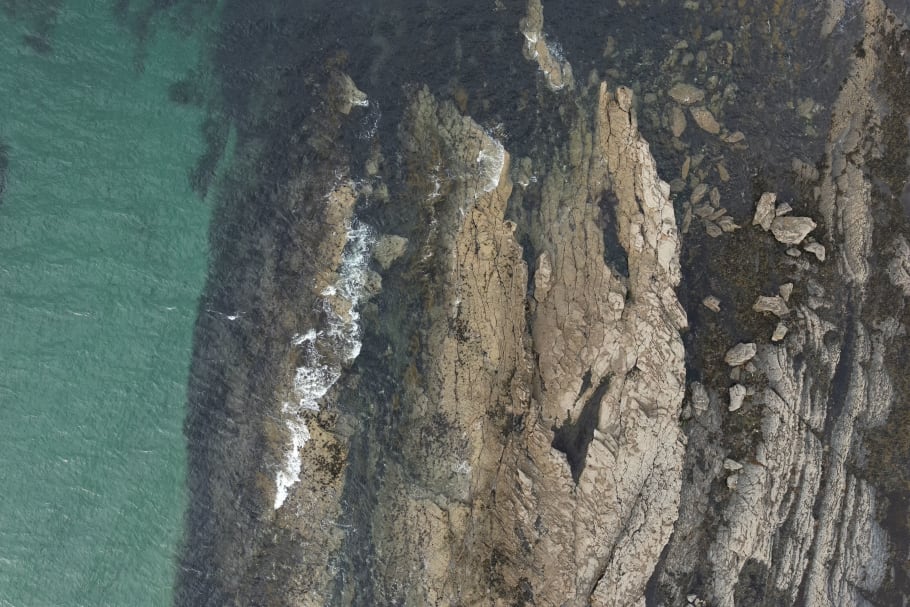
To ensure a high level of accuracy and precision on this project we deployed multiple GCP's on every site. Using large LIDAR compatible GCP's meant we could ensure our data was properly ground truthed and correct. No matter what the drone companies tell you GCP's are always essential if you want to make anything other than pretty pictures out of your data.
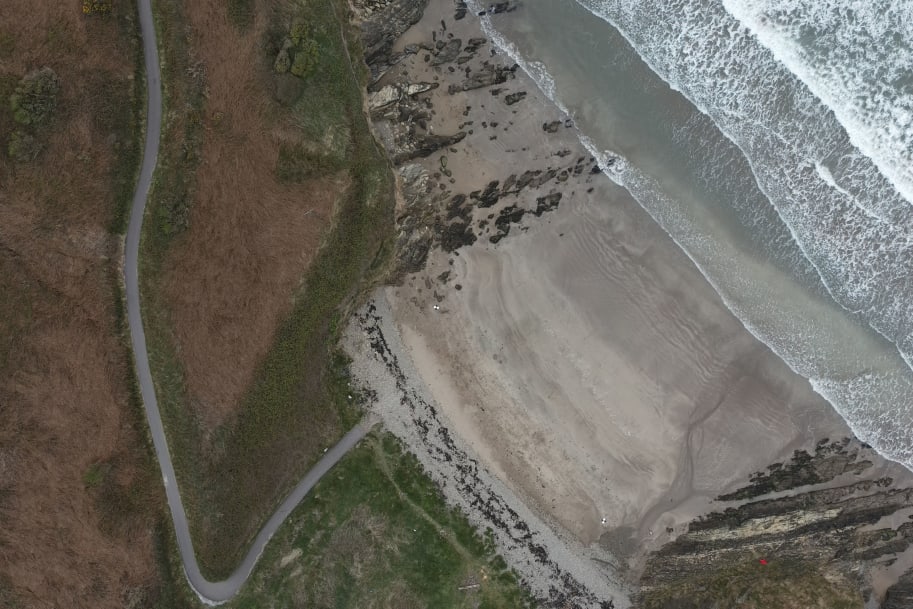
Our team deployed based on site location and size. Sometimes capturing two or three sites in a day and sometimes only getting the GCP's done for one site in a day.Each time we deployed we made sure to assess all factors that may effect the data including weather, cloud cover and time of day (for shadowing) equipment condition and more. The team also had to be mindful of the tides, as they needed to capture images of the coastline at low tide to get an accurate view of the tidal zone. By keeping a good eye on all aspects of the job before commencing data collection we could ensure that everything went smoothly in the field.
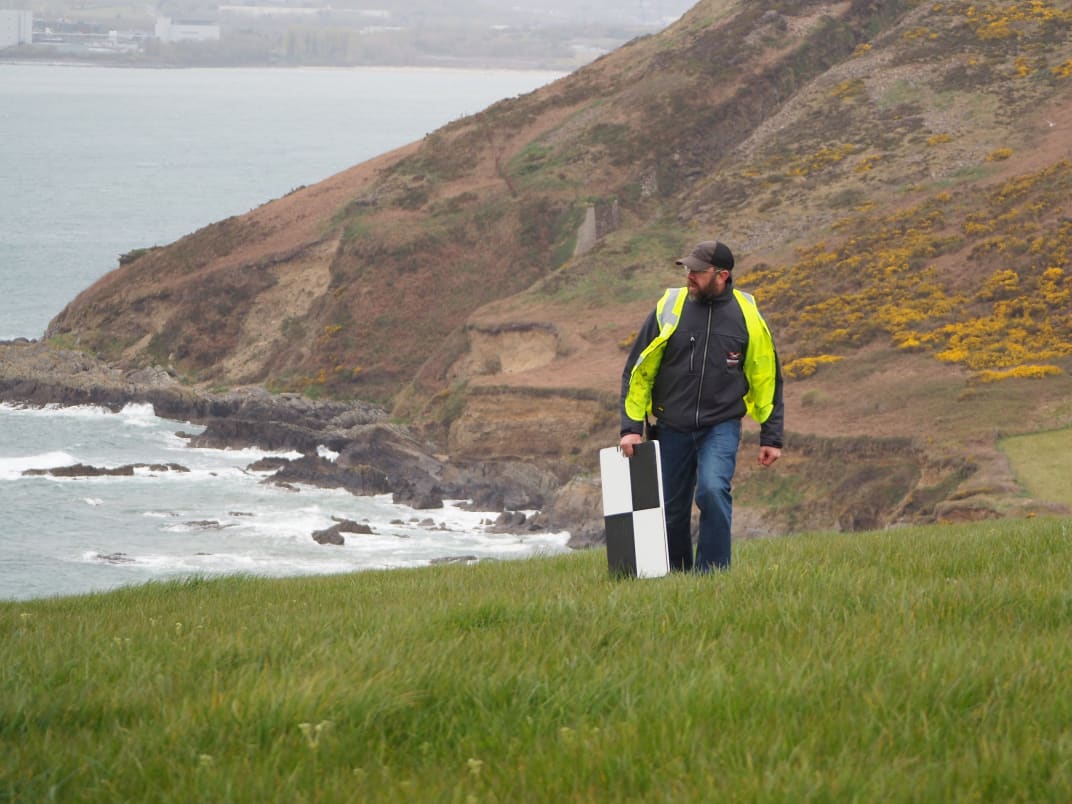
One of the key benefits of using a drone for this study was the ability to capture high-quality data of the coastline from above. The drone was able to fly at a relatively low altitude, which allowed it to capture detailed images of the coastline and the surrounding landscape. The images were then processed using photogrammetry software to create 3D models of the coastline.
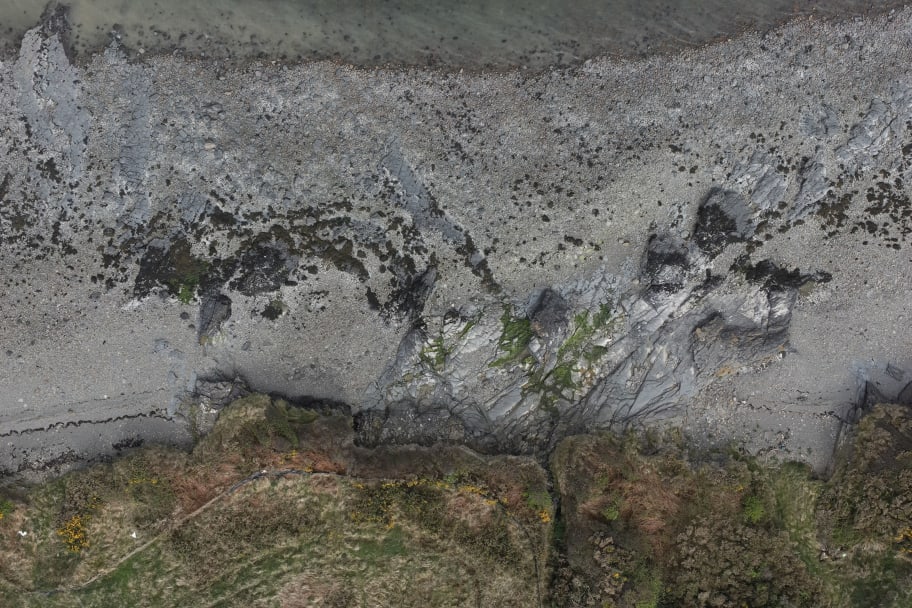
In this type of data capture manually flying the drone have very limited use. For this reason it was important for us to have a good digital representations of all our target areas. This is typically done through KML/KMZ files which we then use to generate the automatic flight profiles. The flight profiles are built using the best photogrammetric practices with particular attention to such items as GSD, Overlap and terrain. Once the profiles were built executing them in the field was a straightforward process.
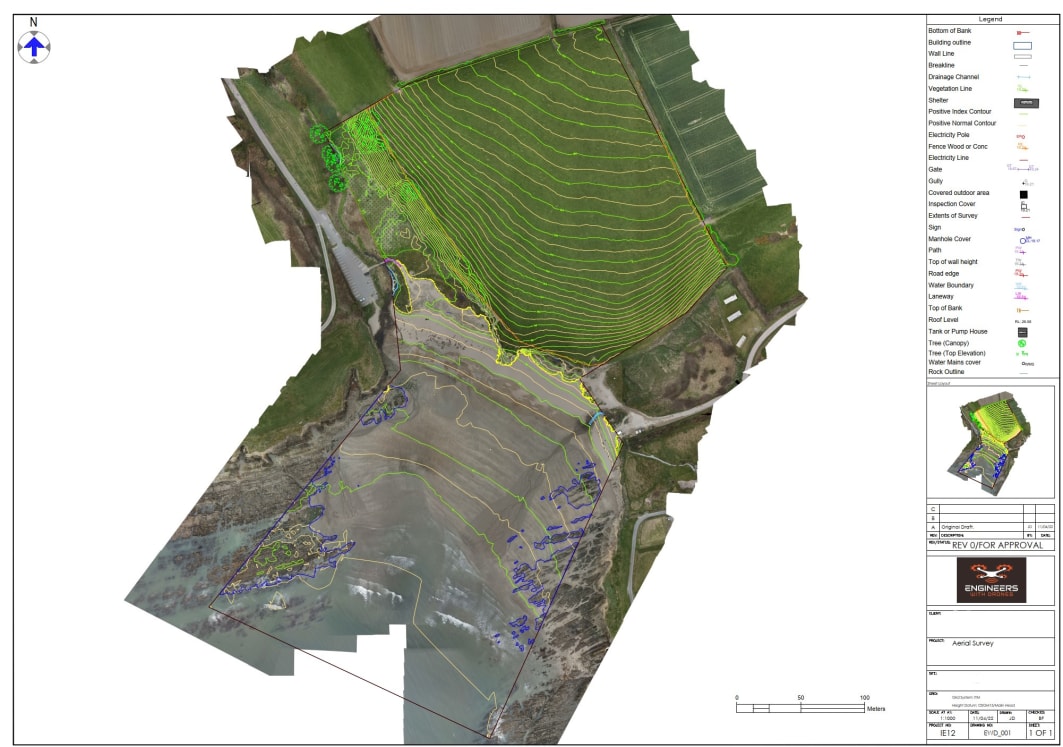
Once all field work was complete we turned our attention to processing the data into useful deliverables. Since the client required a variety of deliverables from raw data to fully processed CAD drawings we had to employ a variety of processes and software to generate the data. We always start witht eh highest quality base data we can generate then work from there. The idea being if the base data is of high quality then so will all subsequent sub data types. If we start with poor quality base data we will produce rubbish down the road.
For feature vectorisation and CAD drafting the minimum level of accuracy required was:
A major benefit of using a drone for this study was the ability to cover a large area quickly and efficiently. The distributed nature of the selected sites under study meant it would have been impractical to survey the area using traditional methods. The drone was the obvious choice and was able to map each are in just a few flights, which saved time and resources.
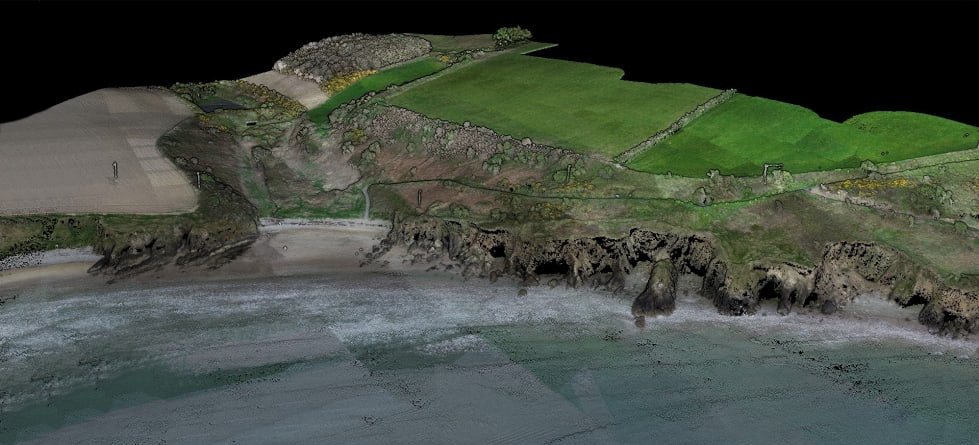
Overall, the use of a drone to map coastal sites was a highly successful approach for this project. The high-quality data captured by the drone allowed the team to create detailed 3D data to be used in their assessments of the coastline, which provided valuable insights when it was time to make decisions. The use of a drone also allowed the team to cover a large area quickly and efficiently and without putting people at risk. In the end the client was delighted with the deliverables and was happy to work with us again on other projects.
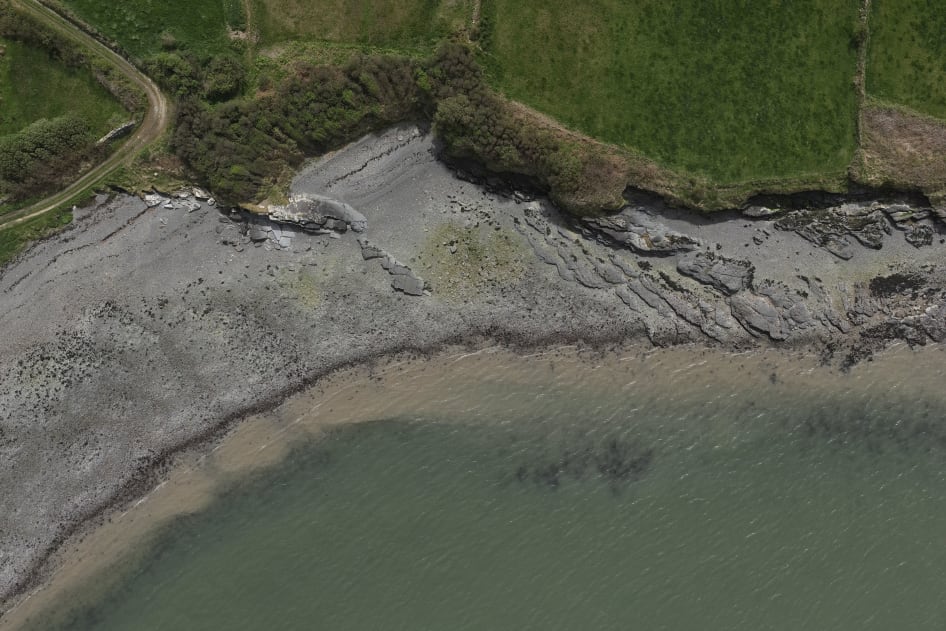
Click the following links to find out more about our land mapping surveys and LIDAR surveys. Alternatively you can contact us here.
Last Updated: 09 July 2023